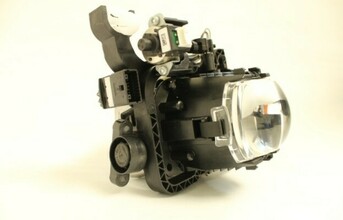
The Juárez production site, which started to produce headlamps in 1997 is one of Magneti Marelli's largest plants with over 3,000 employees producing various lighting products.
It manufactures head lamps, tail lamps, rear appliques, and various electronic modules. Juárez has a strategic position to serve the automotive production hubs in the US of carmakers such as BMW, Daimler, Ford, FCA, GM, Honda, Kia, Nissan, and VW/Audi.
Concerning LED technology, on top of an average useful life longer than that of the vehicle itself, LED offers new possibilities in terms of safety, styling and lower energy consumption.
The use of LED-equipped Daytime Running Lights also makes a significant contribution to a proper energy balance, since 75% of the total driving distance in the world is covered during the daytime. In specific terms, DRLs with LED technology offer an energy consumption of 14 W (with 0.36 g CO2/km) per vehicle. When regular low beams are used instead, energy consumption is approximately 300 W (with 7.86g CO2/km).
This means 20 times more energy consumption compared to the LED daytime running lights. The main advantage offered by white LEDs lies in the colour of their light, which is also known as the colour "temperature". Reaching approximately 6,000° Kelvin, the intensity of their light is just about the same as the quality of daylight. The human eye perceives the road and the edge of the roadway at night in their natural colour, and can distinguish contrasts much more easily.
END


























